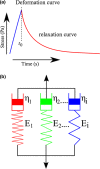Factors affecting the chemical efficacy of 2% sodium hypochlorite against oral steady-state dual-species biofilms: Exposure time and volume application
- PMID: 30807649
- PMCID: PMC7328852
- DOI: 10.1111/iej.13102
Factors affecting the chemical efficacy of 2% sodium hypochlorite against oral steady-state dual-species biofilms: Exposure time and volume application
Abstract
Aim: To study the influence of time and volume of 2% sodium hypochlorite (NaOCl) on biofilm removal and to investigate the changes induced on the biofilm architecture. Steady-state, dual-species biofilms of standardized thickness and a realistic contact surface area between biofilms and NaOCl were used.
Methodology: Streptococcus oralis J22 and Actinomyces naeslundii T14V-J1 biofilms were grown on saliva-coated hydroxyapatite discs within sample holders in the Constant Depth Film Fermenter (CDFF) for 96 h. Two per cent NaOCl was statically applied for three different time intervals (60, 120 and 300 s) and in two different volumes (20 and 40 μL) over the biofilm samples. The diffusion-driven effects of time and volume on biofilm disruption and dissolution were assessed with Optical Coherence Tomography (OCT). Structural changes of the biofilms treated with 2% NaOCl were studied with Confocal Laser Scanning Microscopy (CLSM) and Low Load Compression Testing (LLCT). A two-way analysis of variance (2-way anova) was performed, enabling the effect of each independent variable as well as their interaction on the outcome measures.
Results: Optical coherence tomography revealed that by increasing the exposure time and volume of 2% NaOCl, both biofilm disruption and dissolution significantly increased. Analysis of the interaction between the two independent variables revealed that by increasing the volume of 2% NaOCl, significant biofilm dissolution could be achieved in less time. Examination of the architecture of the remaining biofilms corroborated the EPS-lytic action of 2% NaOCl, especially when greater volumes were applied. The viscoelastic analysis of the 2% NaOCl-treated biofilms revealed that the preceding application of higher volumes could impact their subsequent removal.
Conclusions: Time and volume of 2% NaOCl application should be taken into account for maximizing the anti-biofilm efficiency of the irrigant and devising targeted disinfecting regimes against remaining biofilms.
Keywords: 2% NaOCl; Biofilm; optical coherence tomography; removal; time; volume.
© 2019 The Authors. International Endodontic Journal published by John Wiley & Sons Ltd on behalf of British Endodontic Society.
Conflict of interest statement
All other authors state explicitly that there are no conflicts of interest in connection with this article.
Figures






References
-
- Basrani B, Haapasalo M (2012) Update on endodontic irrigating solutions. Endodontic Topics 27, 74–102.
-
- Bos R, van der Mei HC, Busscher HJ (1996) Co‐adhesion of oral microbial pairs under flow in the presence of saliva and lactose. Journal of Dental Research 75, 809–15. - PubMed
-
- Brindle ER, Miller DA, Stewart PS (2011) Hydrodynamic deformation and removal of Staphylococcus epidermidis biofilms treated with urea, chlorhexidine, iron chloride, or DispersinB. Biotechnology and Bioengineering 108, 2968–77. - PubMed
-
- Bryce G, O'Donnell D, Ready D, Ng YL, Pratten J, Gulabivala K (2009) Contemporary root canal irrigants are able to disrupt and eradicate single‐ and dual‐species biofilms. Journal of Endodontics 35, 1243–8. - PubMed
-
- Busanello FH, Petridis X, So MVR, Dijkstra RJB, Sharma PK, van der Sluis WM (2018) Chemical biofilm removal capacity of endodontic irrigants as function of biofilm structure: optical coherence tomography, confocal microscopy and viscoelasticity determination as integrated assessment tools. International Endodontic Journal 10.1111/iej.13027. - DOI - PubMed
MeSH terms
Substances
Grants and funding
LinkOut - more resources
Full Text Sources

